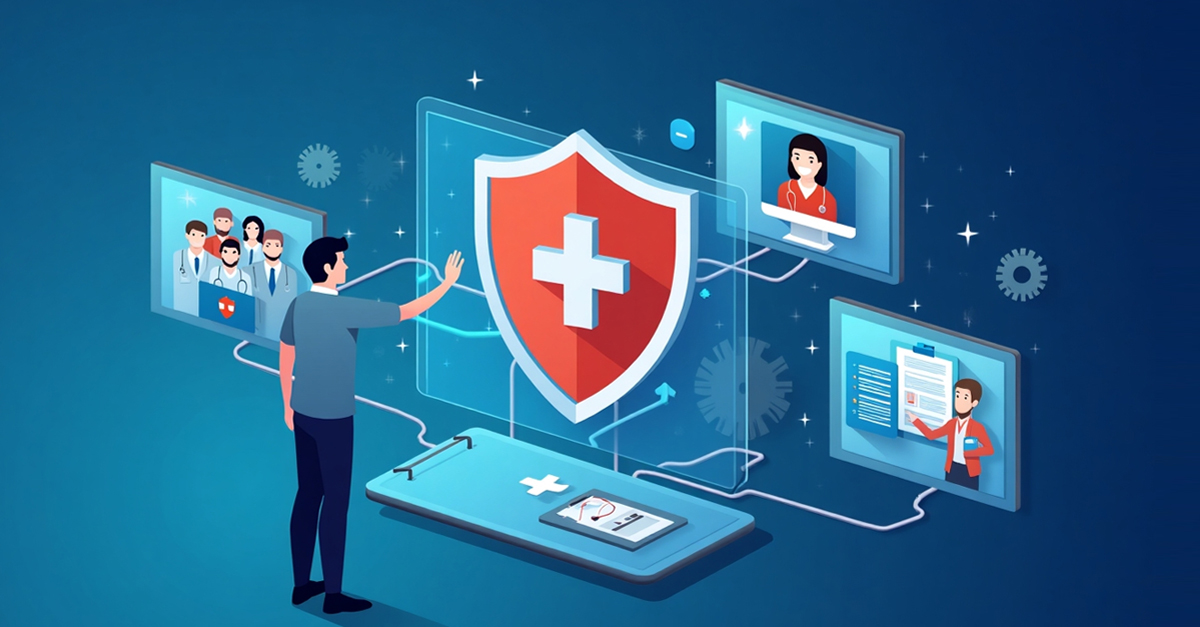
Imagine for a moment, a world where a cyberattack on a hospital’s computer system can put patients’ lives at risk. This is the harsh reality of the healthcare industry’s cybersecurity challenges. Protection of sensitive patient data and system integrity is a top priority for healthcare professionals. But what happens when the very systems they rely on to save lives are compromised?
For healthcare organizations, the stakes are extremely high. It’s not just about protecting data—it’s about keeping people safe, ensuring that the systems stay online and maintaining trust in an industry built on care and confidentiality.
So, how does one get ahead of attackers who have already breached the perimeter defences? Healthcare organizations can enhance their security posture with Deception Technology, a smart and proactive way to detect threats early, without disrupting day-to-day operations.
What is Deception Technology, Really?
At its core, Deception Technology is a proactive security approach that deploys traps and decoys across the network to detect, mislead and isolate attackers—before they can do any real damage.
These decoys are quite similar to real assets like medical devices, EHR systems, databases and IoT endpoints. If an attacker interacts with them, it triggers high-fidelity alerts that indicate malicious intent—without disrupting legitimate operations.
Deception can help reduce the risk of data breaches and compromised patient care, giving healthcare professionals peace of mind and confidence in their ability to protect patient data.

Why It Matters for Healthcare
Healthcare networks are inherently complex, with legacy systems, siloed data environments and critical operational tech that cannot be taken offline, making it difficult to apply conventional security methods.
Also now, there’s a growing layer of risk: IoT-based medical devices.
Infusion pumps, smart monitors, imaging systems and connected diagnostic equipment are revolutionizing care—but many of them run on dated firmware, use unsecured protocols and lack even basic authentication. These devices are often invisible to traditional security tools, yet fully accessible to attackers moving laterally across the network..
Protecting IoT medical devices is complicated by their inability to upgrade, accommodate EDR agents, and tolerate extended downtime.
Deception technology can help address these issues by:
• Early detection of lateral movement within the network.
• Identifying potential insider threats through access attempts to decoys.
• Reducing dwell time and also giving defenders a head start before damage occurs.
• Deception technology enhances IoT security by utilizing decoys to detect threats without relying on device-based software.
Since, deception tools operate silently, it makes them ideal for detecting unknown or zero-day threats.
Real-World Impact: Use Cases in Healthcare
- A hospital deploys a fake medical imaging devices (DICOM decoys) on its network. Any attacker scanning the environment falls for the lure, triggering an alert— much before gaining access to real patient data.
- A healthcare provider uses deception to monitor for unauthorized access to fake EHR databases. When an unauthorized individual tries to access sensitive data, they are caught interacting with a decoy, raising an instant red flag.
- In a ransomware scenario, deceptive file shares can lure the malware into revealing itself, giving responders valuable intel and also sufficient time to isolate the threat.
- And with the increasing number of connected IoT medical devices—many of which are unsecured and unmonitored—deception can mimic these systems too, trapping attackers who attempt to exploit vulnerable endpoints without putting real devices or patient safety at risk.
Why CISOs are Paying Attention
In an industry where lives increasingly depend on system uptime and data integrity, deception technology offers something rare: Early Warning without noise.
It doesn’t replace traditional security tools—but it adds a powerful layer that shifts the advantage back to defenders. As cyber threats grow more sophisticated, Deception may become a standard component of resilient healthcare cybersecurity strategies.
The Key Takeaway
In the fight to protect healthcare systems, deception technology isn’t just strategic and clever—it’s necessary.

Comments are closed